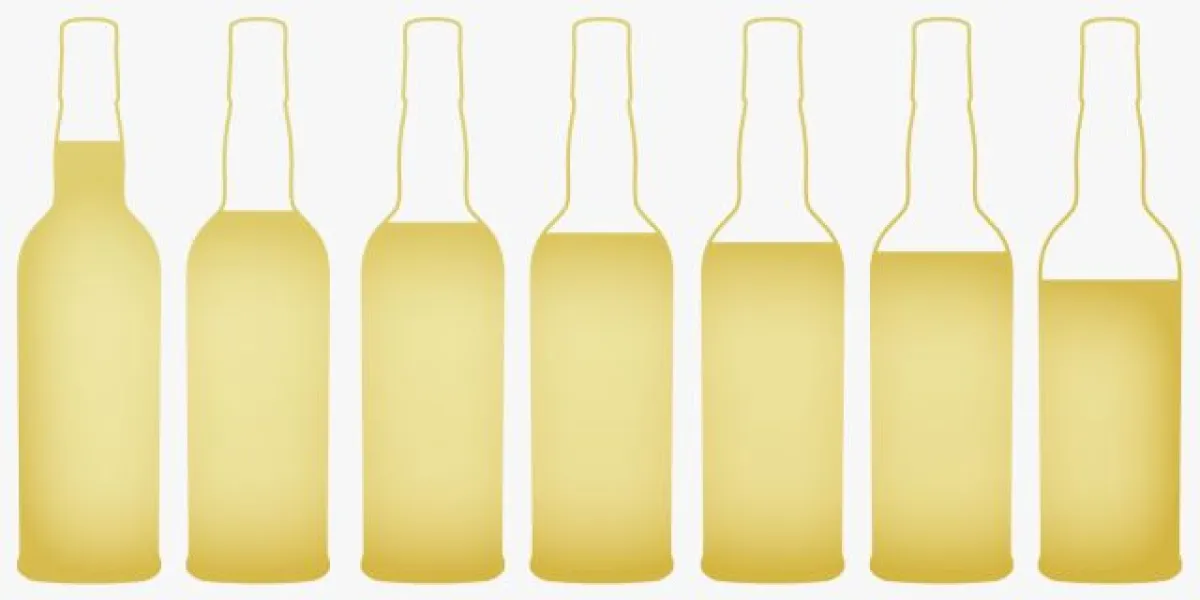
Our hypothesis was that the higher the fill the more attractive the bottle and the higher the price paid by a connoisseur, collector or investor.
We are fortunate to be able to record granular key details about each and every bottle we datacapture from UK auctions. Our "eyes on" approach for every single bottle facilitates forensic attention to detail and creates a database we can mine and interrogate to discover trends and insight.
This has led us to ask the question about the impact of fill level on prices paid/values achieved. We have categorised the various levels as per noted below with a perfect/very good fill taken as "Into the Neck" and a very poor fill taken as "High Body" which means that the liquid level is in to the body of the bottle and well below the shoulder.
| Fill Level | Retained Value |
|---|---|
| Into the Neck | 100% |
| High Shoulder | 75% |
| Upper Mid Shoulder | 65% |
| Mid Shoulder | 60% |
| Lower Mid Shoulder | 55% |
| Low Shoulder | 45% |
| High Body | 20% |
Our hypothesis was that the higher the fill the more attractive the bottle and the higher the price paid by a connoisseur, collector or investor. Conversely the opposite would happen with poor fill levels. Our data, looking at a range of prices across a range of fill levels and then averaged for an overall "retained value" clearly confirms that buyers pay less and less as fill levels reduce for the same bottle across all price points.
What is of particular interest to RW101 is how much the value can be impacted for small reductions in liquid level. A drop from Into the Neck to High Shoulder can impact values negatively by around 25% - a huge drop in value! A drop from HS to Upper Mid Shoulder loses an additional 10%. At each liquid level reduction we see a drop in values paid.
When seeking to acquire a bottle - please check the liquid level carefully - particularly if you plan to drink, collect or invest!
If you just want to have a nice piece of glass and a cool label and are not bothered about the liquid inside then look out for low levels and save yourself some cash!
Our chart (below) seeks to illustrate a range of fill levels and the corresponding % retained value achieved. The gold line is the absolute average and the black line is a linear trend line. This will allow the experienced auction buyer to estimate what he/she should pay for bottles at differing fill levels.

But we have to ask why the liquid levels for some bottles are less than perfect?
The closure (cork/capsule or screw top) is imperfect and vapour (and liquid) losses have occurred.
The closure has failed completely and led to a catastrophic liquid loss and staining should be apparent around the neck and possibly label of bottle. This can happen with cork bottles stored on their side rather than upright!
Liquid abstraction - has someone opened, removed and then re-closed the bottle? Sometimes a thirsty "visitor" may help themselves to your precious bottle… Proof, if yet more proof were needed, of the benefit of storing bottles in a safe location… away from home!
Finally, in order to protect the integrity of any bottles and the liquid therein, we would always advise that you seek to tighten any screw tops, push down any corks, store the bottles upright/vertically, keep them in a relatively temperature stable place and out of direct sunlight.